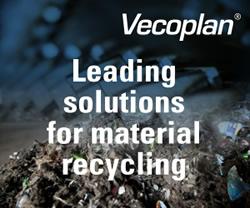The Impact of a Green HVACR Industry
A Green America can be achieved by maximizing the efficiency of all mechanical systems and training the next generation of technicians to properly size, install and service HVACR equipment.
There is a great deal of discussion about moving towards a green economy. We read about Green in the news, we see it on TV, and we hear about it on the radio, but what is it and how does it affect us in the HVACR industry? When it comes to HVACR systems, Green means maximizing the energy efficiency of existing equipment, specifying the most efficient systems available for the application and the available budget, using renewable and sustainable fuel sources, and conserving water. Green is about saving people money by cutting their energy cost.
The National HVACR Educators and Trainers Conference co sponsored by HVAC Excellence and The Green Mechanical Council provided nearly 500 attendees with over 40 sessions, many on Green and Sustainable Technologies. Classes included not only theory but hands on and visual demonstrations on a mobile green and sustainable classroom.
David Boyd, Vice President of Education for Appion Inc., discussed the impact of a green HVACR industry. He shared a short history of the electrical power grid in the United States to demonstrate how the HVACR industry's lack of quality installations and service are affecting the electrical grid and costing Americans millions of dollars. Mr. Boyd declared that the majority of equipment installed today is improperly sized and charged, while poor evacuation of refrigerants is dramatically affecting system performance. In the end, millions of dollars are being wasted through excessive energy usage caused by improperly installed and serviced HVACR equipment. A Green America can be achieved by maximizing the efficiency of all mechanical systems and training the next generation of technicians to properly size, install and service HVACR equipment.
Chris Haslinger, of the United Association discussed how green and sustainable technologies can be integrated into training programs. New people entering the industry need to be taught concepts and terminology related to green mechanical systems, sustainable HVACR, electrical, energy efficiency concepts, energy management and alternative energy systems. Chris outlined what the United Association with 350,000 member and their 3,000 employer partners are doing to prepare technicians for the challenges of the new green economy and asked educators and trainers to join them on their quest. Learn more about the UA and their Green Commitment at http://ua.org
Green is on the move in the HVACR industry, and the United Association visually demonstrated that at the National HVACR Educators and Trainers Conference. They have built two green and sustainable technologies mobile classrooms that travel around the country. The first generation mobile training center was at the conference allowing attendees to see firsthand the many ways in which a building can become more energy efficient, use fewer natural resources and have minimal impact on the environment. Learn more at http://hvacgreen.net
Richard Benkowski of Carrier and a trainer for the United Association introduced a green awareness training program. The program covers HVAC, IAQ, Plumbing, and Electrical and focuses on green mechanical terminology, concepts, products and systems. The program Mr. Benkowski taught was develop by the United Association, Ferris State University, HVAC Excellence and is approved by the Green Mechanical Council. The curriculum, consist of a training manual, instructors guide, power point with speakers notes and green awareness certification.
As the HVACR industry starts in discuss the building shell and looking at the structure as a whole, Thermal Imaging will become an everyday word in our vocabulary. Mr. Bernie Lyon of Flir discussed training HVACR personnel on the effective use of modern thermal imaging systems, and covered: camera operation, recognition and compensation for emissivity variations, benefits of infrared thermal imaging, interpretation of thermal images, and more.
A common misconception in the industry is that there are grants available for HVACR equipment. Keith Avery of Hampden Engineering discussed how there are no specific grants for HVACR programs, but there are grants available for programs that incorporate green training into their curriculum. Grants may be available to add solar, wind, photovoltaic, or energy auditing to a current program. For additional information visit www.hampden.com
Green is on the move in the HVACR industry and you can get on board or be left behind! A green collar job focuses on: the triple bottom line, doing things that are right for the environment, that are socially responsible and are profitable. These jobs often have tasks that result in energy efficiency, a reduced carbon footprint and the utilization of alternative, renewable energy sources like: solar thermal, solar photovoltaic, wind, and biomass. One of the most important things in transitioning to green is the ability to make the connection between the tasks and skills that students will learn or master and their impact on energy and the environment.
For more information on all of the sessions at the National HVACR Educators and Trainers Conference, photos, presentations, visit www.hvacexcellence.org or www.greenmech.org
Featured Product

